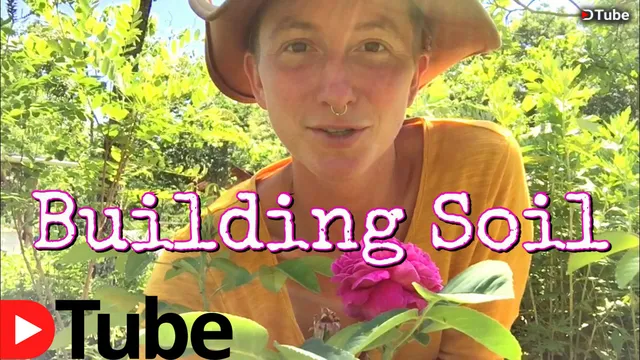
Since moving onto our Homestead, we have done our darndest to align ourselves with nature and work as closely as possible with the land we are now stewards of.
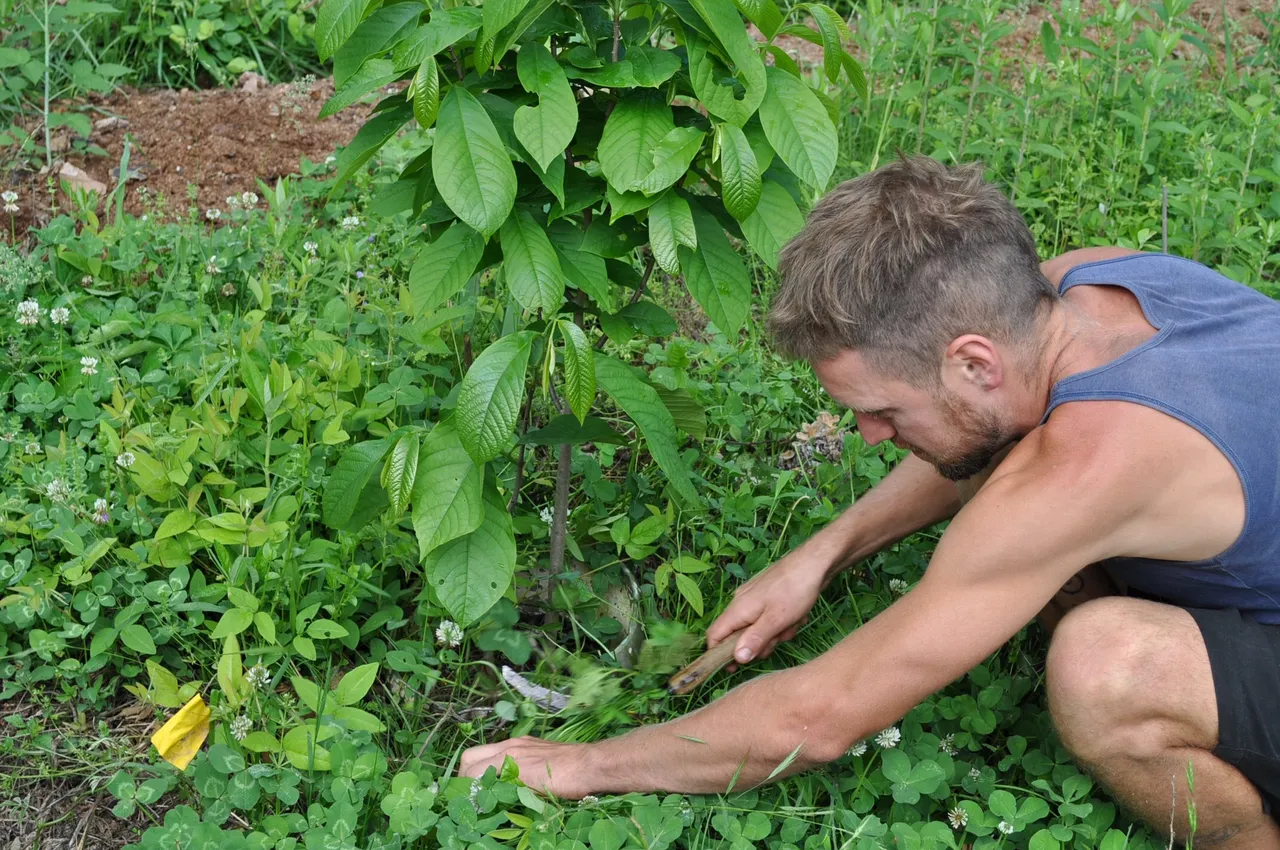
Ini practicing the Chop & Drop method beneath a native Paw Paw on our land using a Japanese Rice Knife.
Through years of study and hands-on experience on other properties, we had gleaned a fairly wide breadth of understanding of what Permaculture could look like.
We see Permaculture not strictly as a set of techniques, but rather as an ideology, approach and design modality. By striving to embody, practice and evolve our connection to the natural world, we have come to deeply appreciate the strategies of land management that are simple, slow and require less work from us.
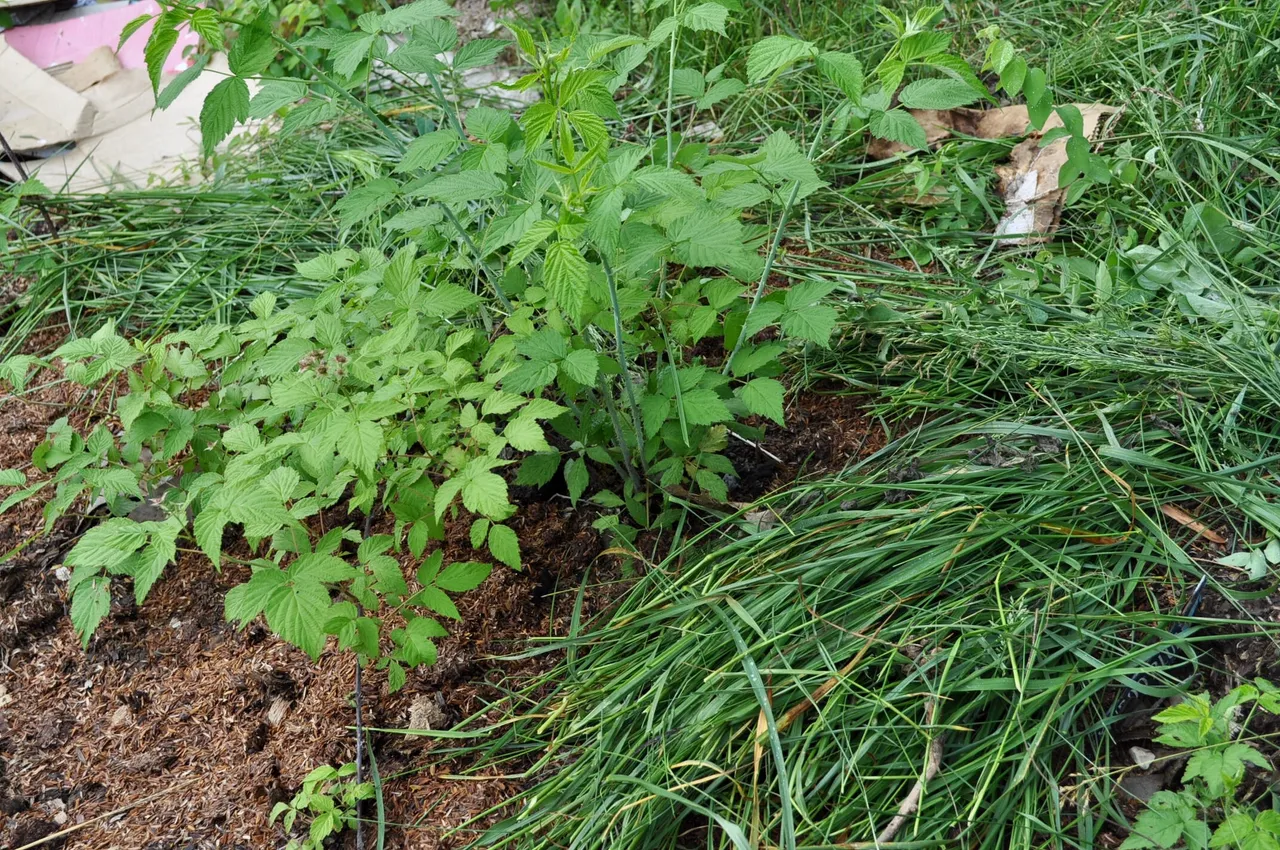
Grass chopped and dropped at the base of a Raspberry Plant.
Transitioning Land
We moved onto a property that had not been inhabited by humans, but which had a section that been cleared within the past decade.
Luckily the previous owners had a driveway put a driveway in, but we knew we had a lot ahead of us. We did an assessment of existing communities and ascertained an overall picture of the stage of ecological succession that the land was going through. We noted the diversity of species, growth habits, soil textures, slopes and other indicators of what kinds of plants the land would best support.
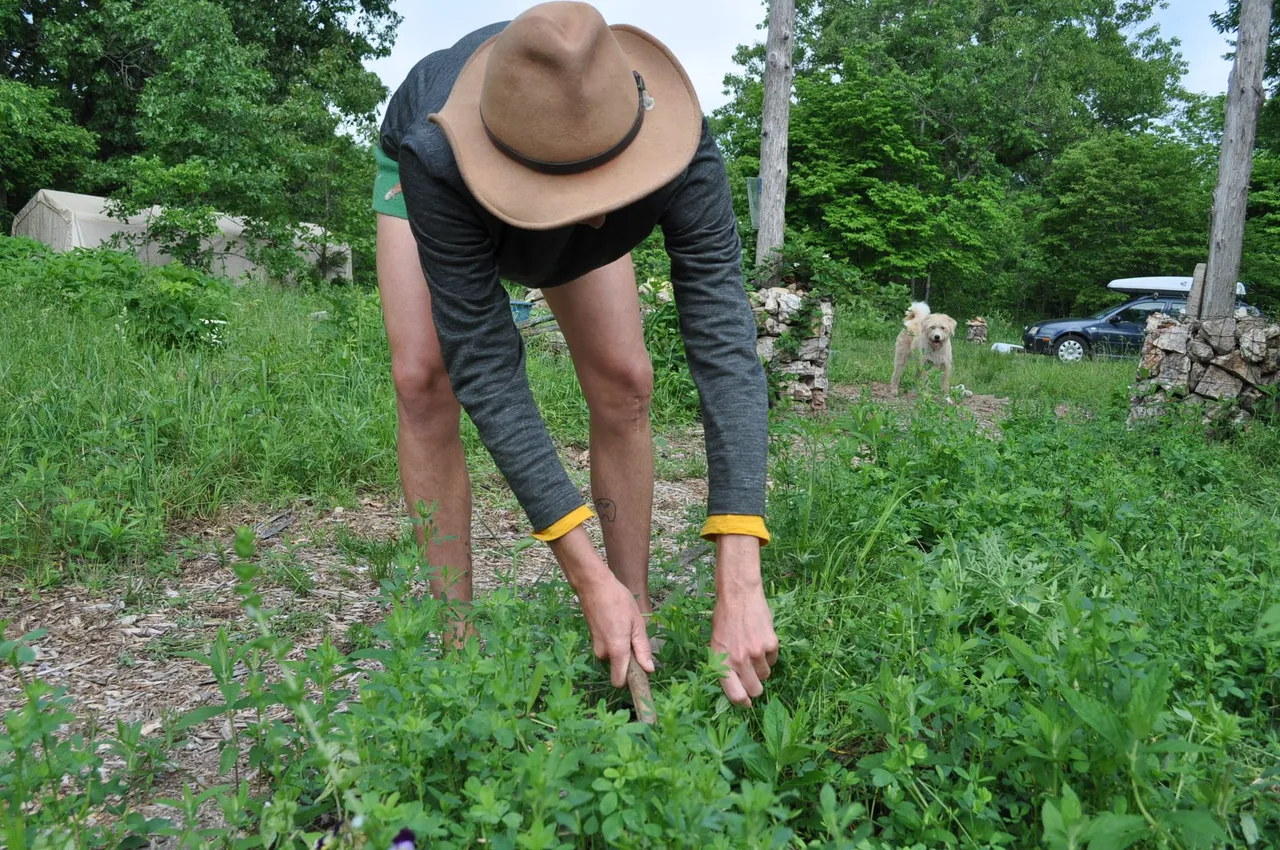
Wren cutting alfalfa cover crop (rich in nitrogen and nutrients) to drop in place to slowly build soil.
All of this informed the following stages of evolution that we are guiding on this gorgeous property we are blessed to steward.
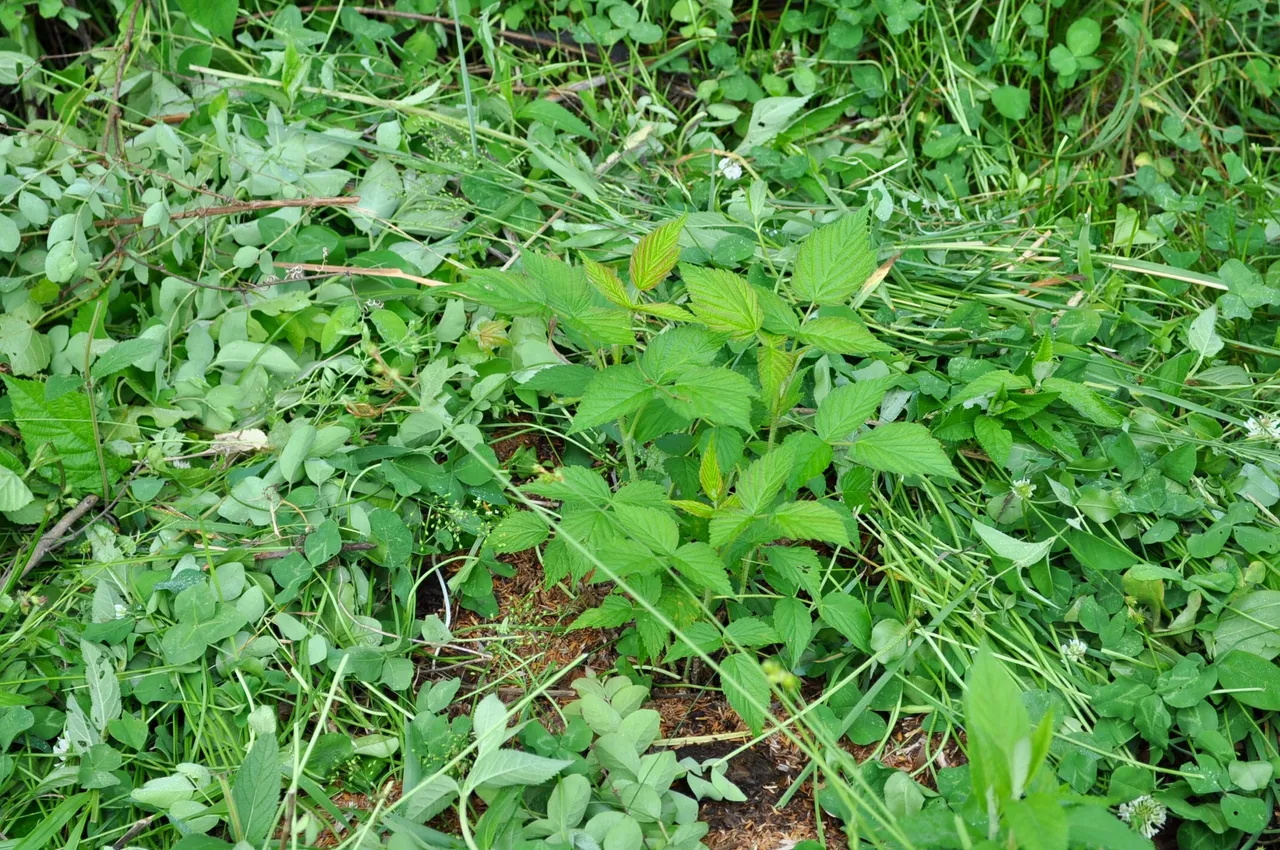
Another berry with organic matter at its base.
The process of clearing brush and saplings began, and before we knew it we had pathways cleared and a plan started to evolve. Soon enough we had hundreds of plants in the ground and needed to ensure these plants thrived.
Strategies for Thriving Plant Establishment
The first thing we were keen on was choosing appropriate species for the land. This meant learning about what already was growing here and going from there.
We noticed mulberries, persimmons, paw paws, blackberries, blueberries and grapes all growing wild on the land. We chose to focus on improved varieties or similar species to those already happily growing here. We have since planted and grafted a wide variety of similar species. Given our poor soils and low organic matter (not to mention a desire for abundance) we knew water and nutrients needed to be deeply considered and carefully managed.
Why not work with nature on this one?
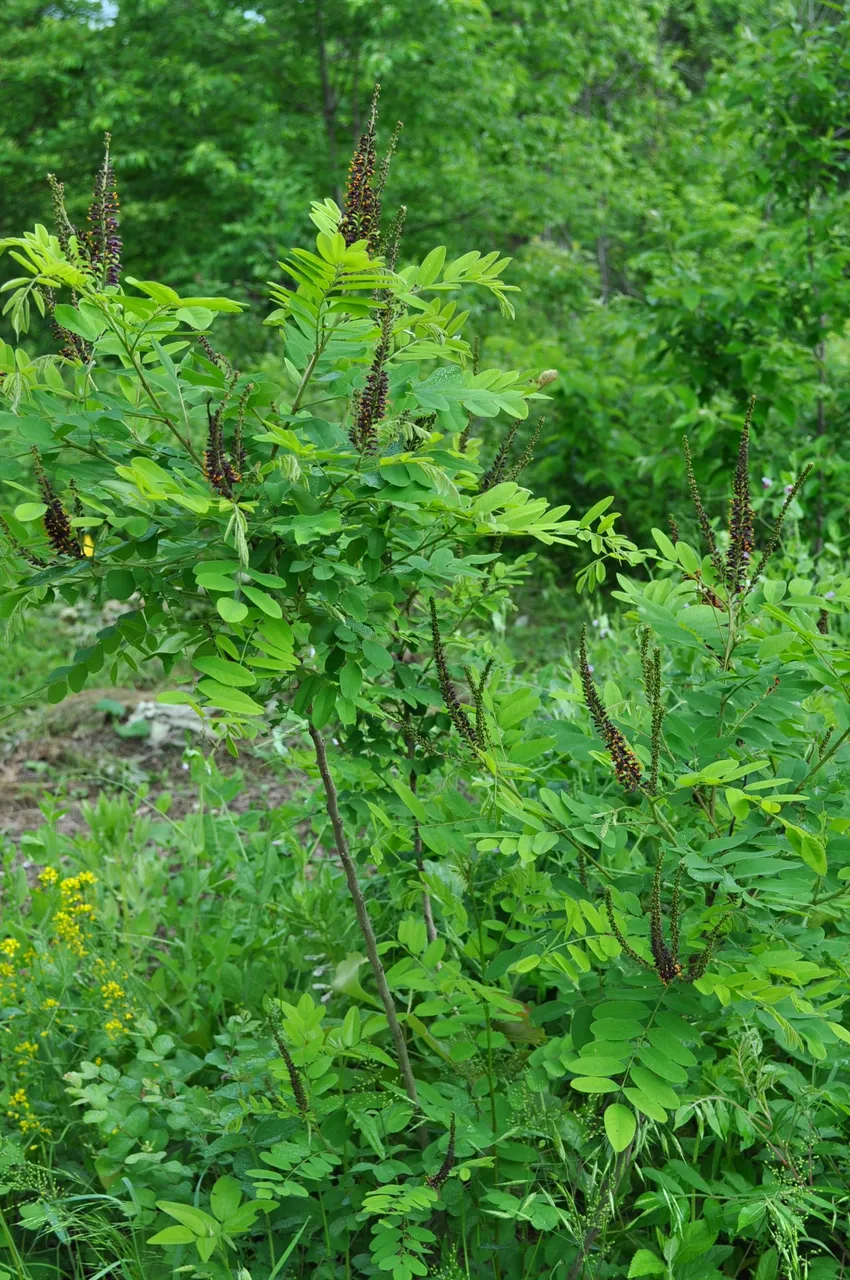
Wild False Indigo, a regional native plant that we introduced to our land. It is a legume which naturally "fixes" nitrogen into the soil while also providing beautiful blooms as a nectar source and copious amounts of organic matter each season that we prune and drop around nearby plants to build soil and mulch with.
Chop and Drop
During the several PDC (Permaculture Design Courses) I have either attended as a student or as a student teacher, the most impactful take home is the importance of OM. Yes the seed sound cosmic creation vibration root of all life embodiment of the universe…. but also organic matter.
Organic matter plays a vital role (and is under-appreciated in conventional agriculture) in the soil food web and overall health of plants. This is where the chop and drop technique shines.
Chop and Drop could not be a simpler technique as it uses plants growing near a “crop” plant as mulch.
At Mountain Jewel we employ this heavily as it is important to bolster the soil food web.
What this means for us is planting species that are known as dynamic accumulators (plants that act of pumps to liberate and accumulate minerals for plant use) such as comfrey, dandelion, chicory plantain and others.
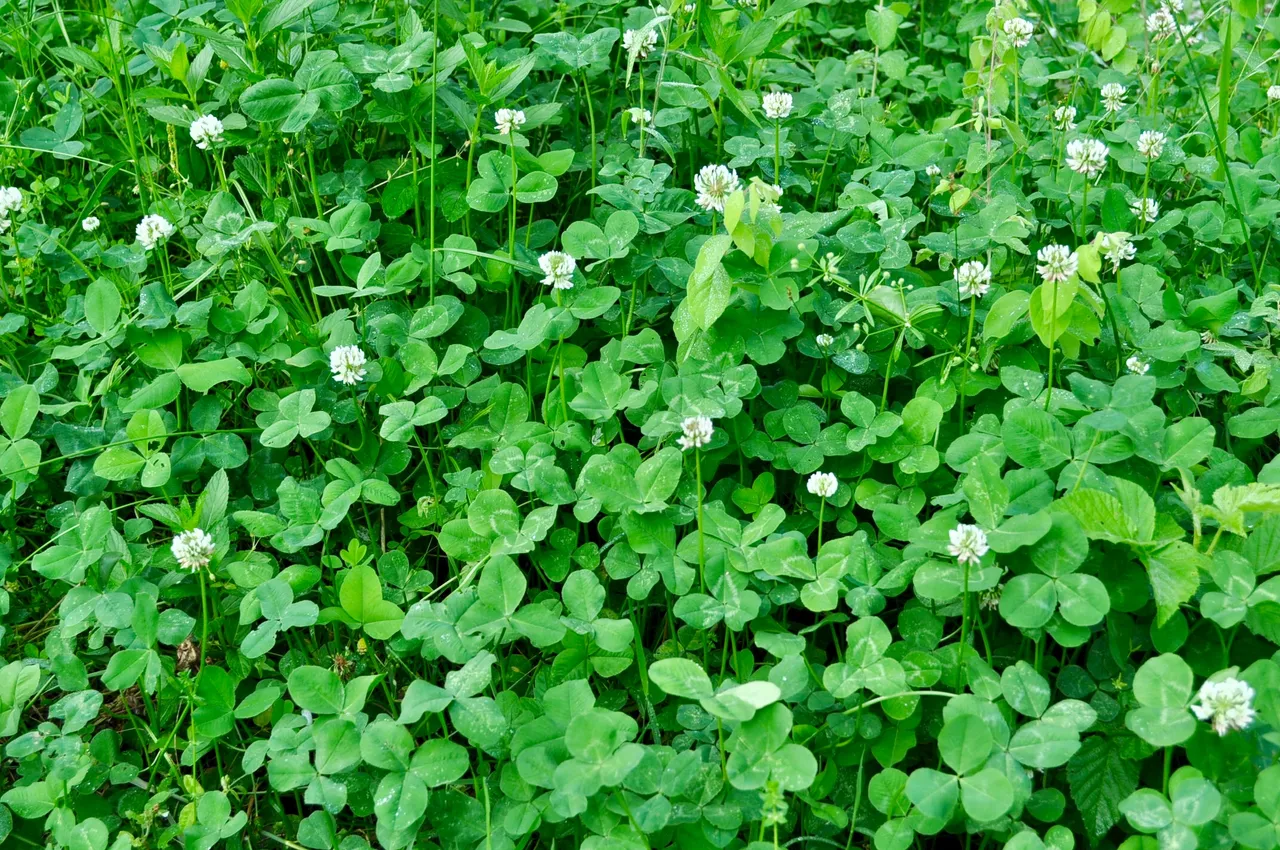
White clover we've seeded on the property as a cover crop which we chop and drop to build soil. A fantastic option!
We also have established healthy stands of red, white and crimson clover, which both fix nitrogen and create great mulch. It also means using existing species (mostly a variety of cool and warm season grasses, blackberries and buckbrush) as mulch. Both the planted and wild plants are cut low to the ground and piled around the plants we are choosing to crop. Here’s the gist of it:
- Chop (or cut)
- Drop
- Repeat
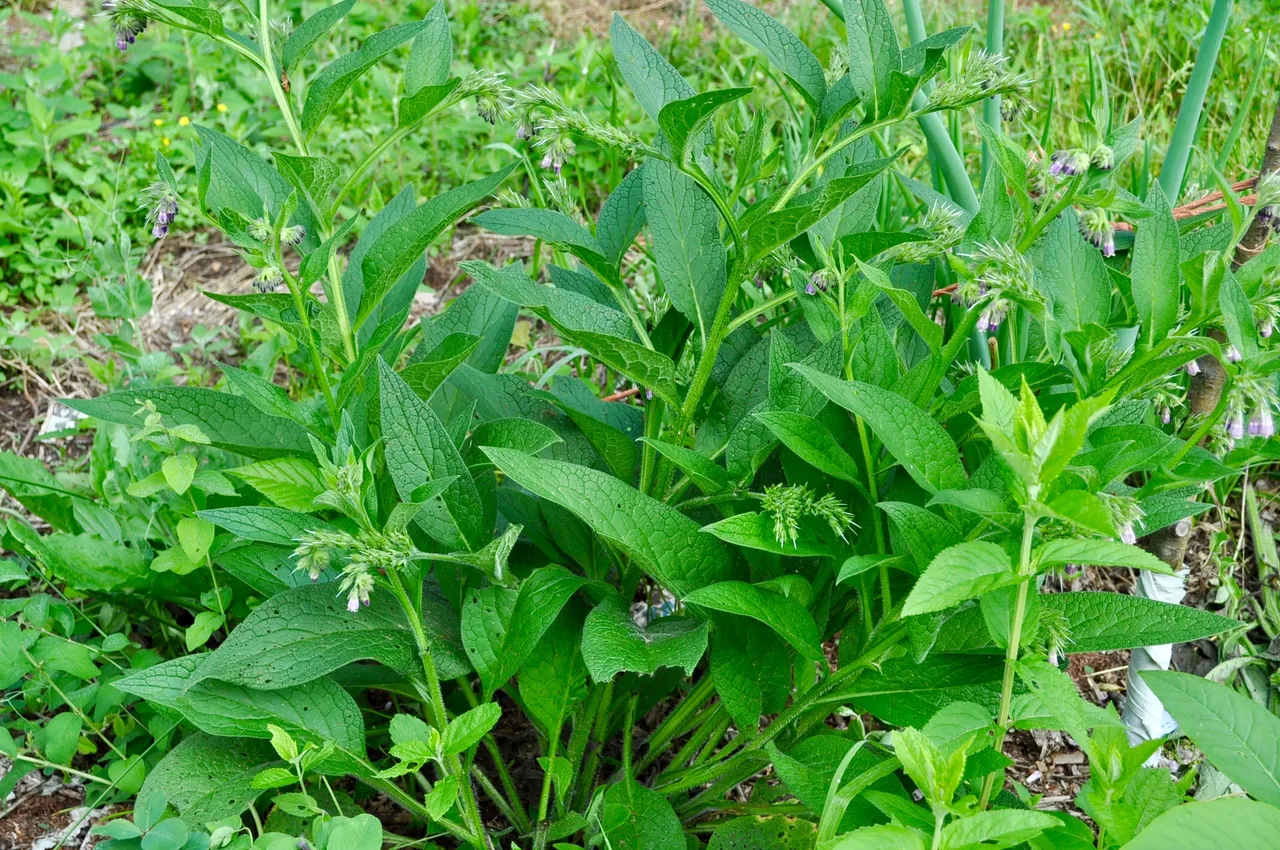
Comfrey, another must-have chop and drop plant in any garden. Comfrey brings up nutrients and minerals from the soil which are then collected in her leaves. Chopping and dropping around plants benefits them as her leaves decompose and add greatly to the soil food web. A fantastic plant!
Feed Your Soil to Feed Your Plants
This grassroots practice (you catch the pun ;)) has many benefits that are not immediately obvious, but some that are. For starters, it suppresses weeds. When mulch is laid of heavily enough, it blocks sunlight from reaching the soil; this in combination with a dense layer will smother most plants. If you’re dealing with enthusiastic plants like bindweed, quack grass, Johnson grass, Bermuda grass, sheep sorrel or others you may have to get a little cheekier.
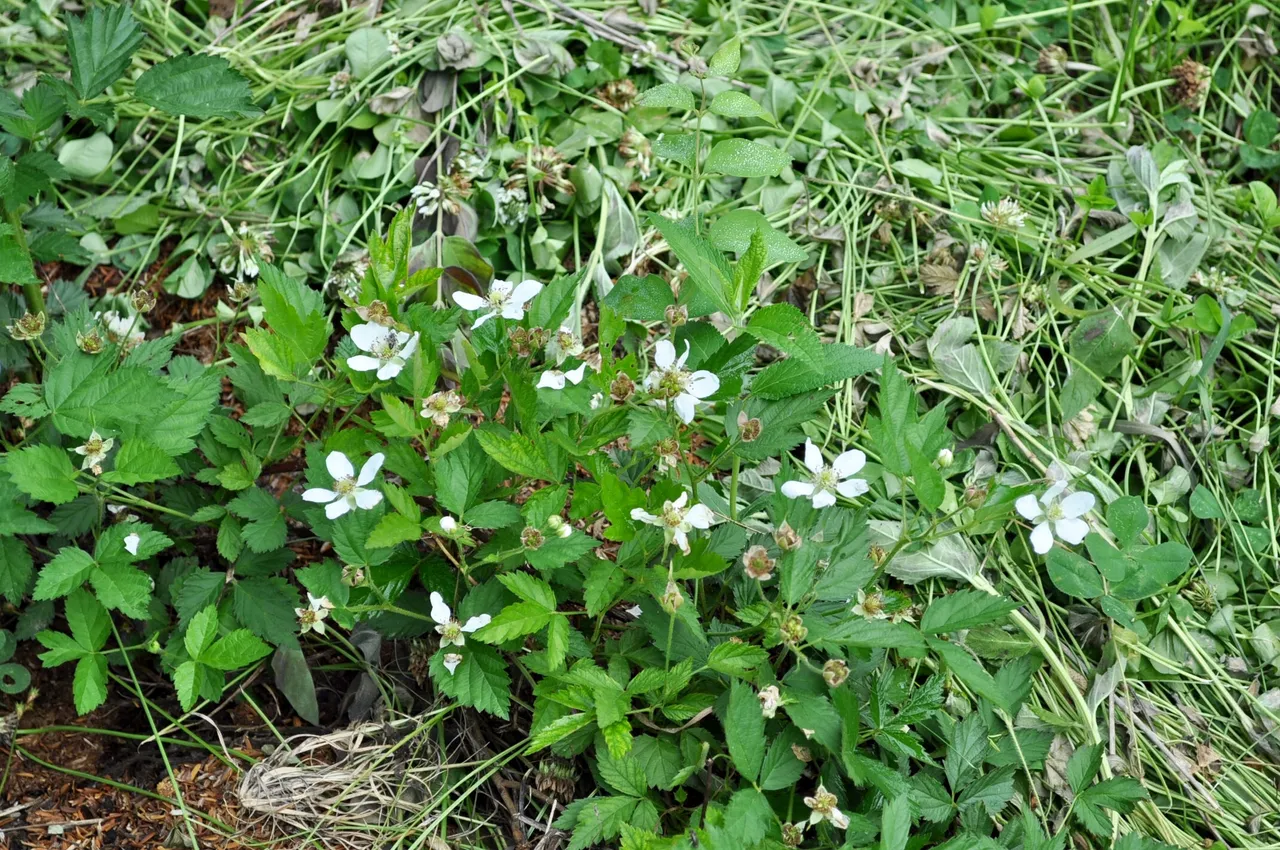
A Boysenberry with chop and dropped OM around it.
On the whole the continued application of heavy mulch will suppress unwanted plant growth around the plants you’re caring for.
In natural ecosystems, rarely is bare soil present. Nature abhors a vacuum and will quickly fill the bare soil with plants.
The obvious result from adding organic matter on top of soil is protection of the soil itself. By adding mulch, we are mimicking natural soil cover while protecting the microbes from the hot sun, regulating moisture and temperature while also mitigating erosion and structural damage to the soil.
The mulch will eventually become food for microbes and critters, which will improve soil quality in umpteen ways. The benefits of OM are astounding!
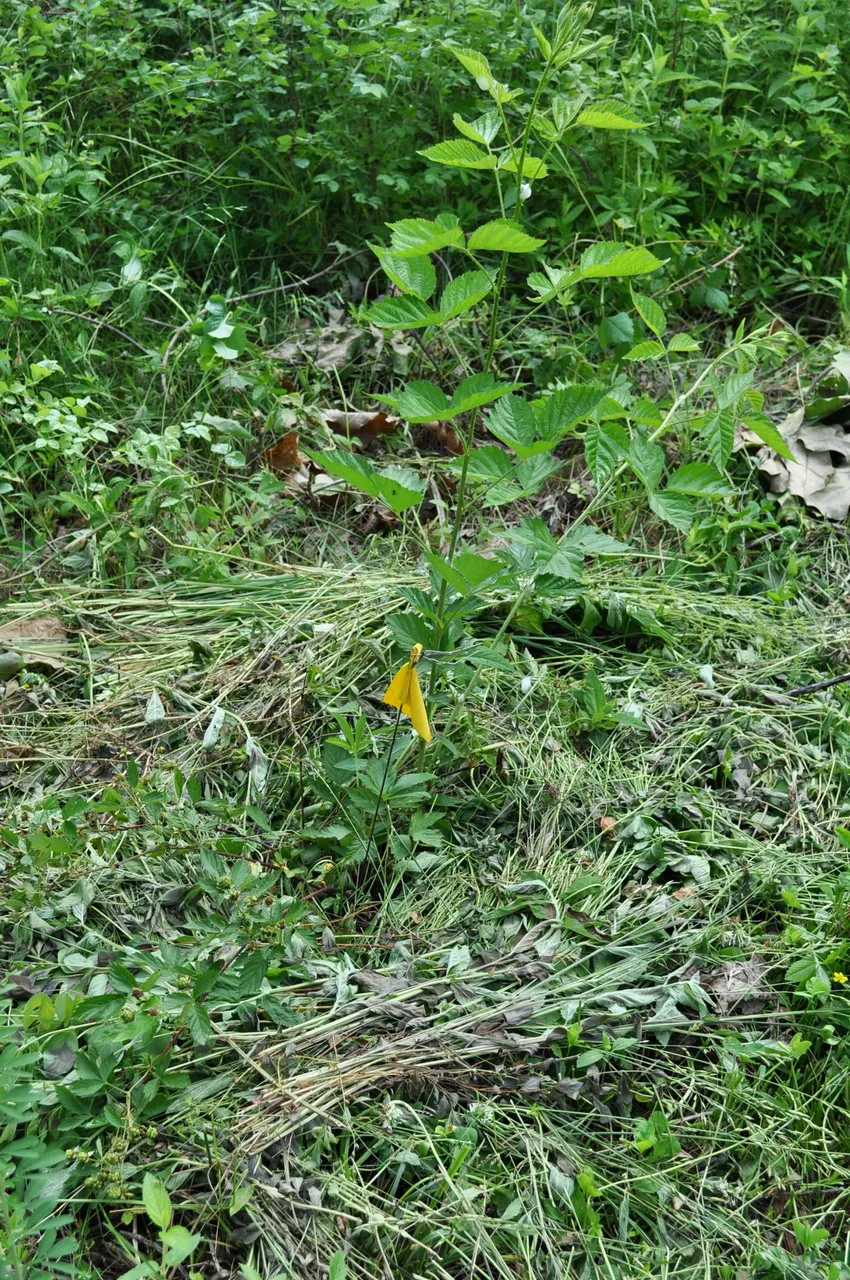
Another berry with Chop and dropped OM around it.
Using green fresh mulch will add nitrogen to the soil and help feed the plant as well. We especially favor white clover because it adds nitrogen (while growing and as mulch), of its low growth habit, honeybee forage and dense growth. We cut the clover every few weeks, which actually stimulates roots to grow bigger and stronger. They also set seed much more quickly than grasses so this repeated cutting can help tip the scales in favor of a clover land. The repeated cutting is similar to how grazing animals can improve pasture land by cyclically eating of the tops of plants causing some root die off but also stimulating growth and helping promote water infiltration, nutrient flows and increasing OM in soil.
Right Tools for the Job
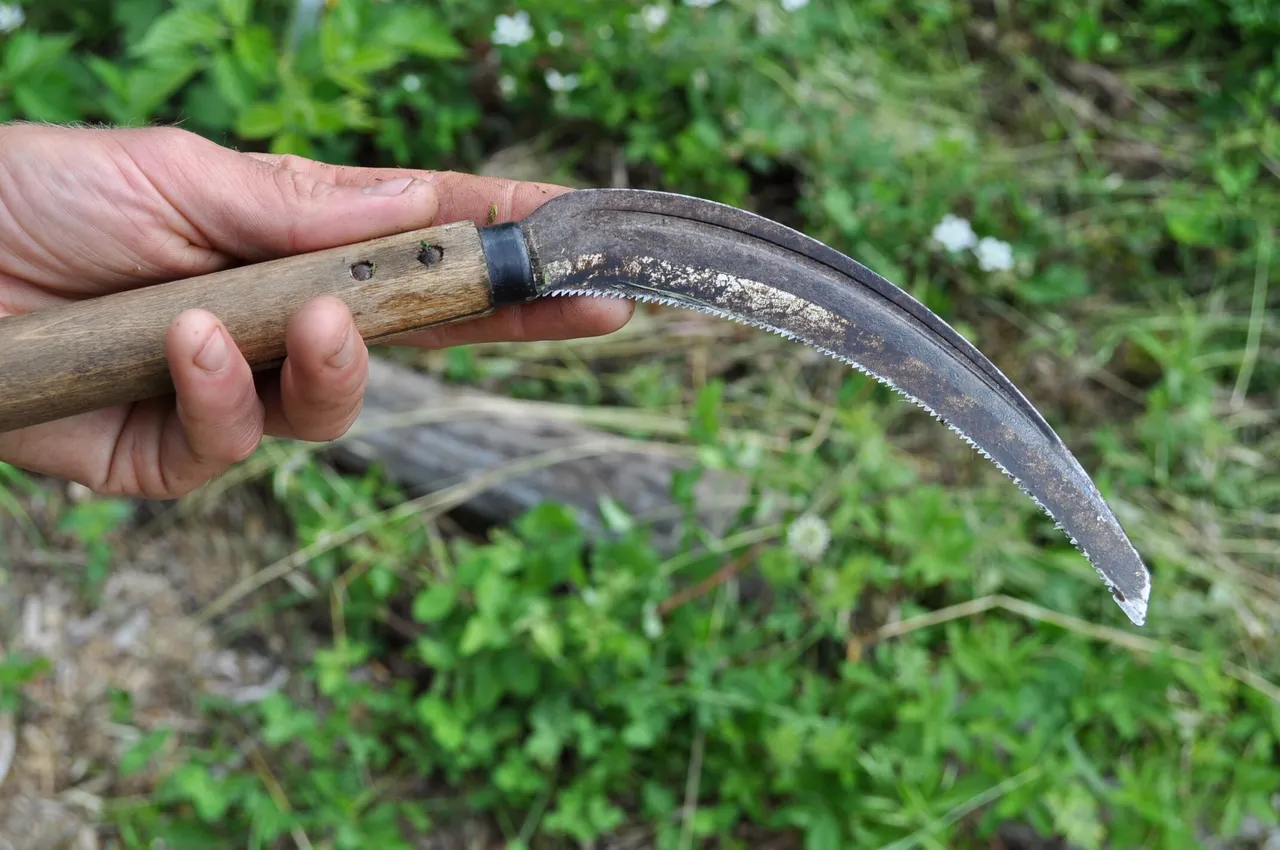
Japanese Rice Knife
The tools depend heavily on what kind of terrain and plants you’re dealing with.
Sometimes we will simple tear the clover with our hands, or pull out herbaceous plants. We may also use a brush scythe (I have 1000s of hours of practice cause it’s the exact motion used when playing hockey). Hands down the favorite tool for the job. It is a serrated sickle, introduced to me as a Japanese rice knife. A Japanese Permaculture group gifted this tool to me while visiting O.U.R. ecovillage when I was working there as farm manager. I am slightly biased in that I have loved every Japanese tool I’ve used.
I like using this tool as I can use it squatting or bending over and can cut very close to the grounds. It also is much less strenuous than swinging a brush scythe. If we had flatter land with fewer rocks and brush and more grass, I’m sure I would be all about the scythe. If you use any type of mower, the cut brush and grass can be added as mulch to plants as well.
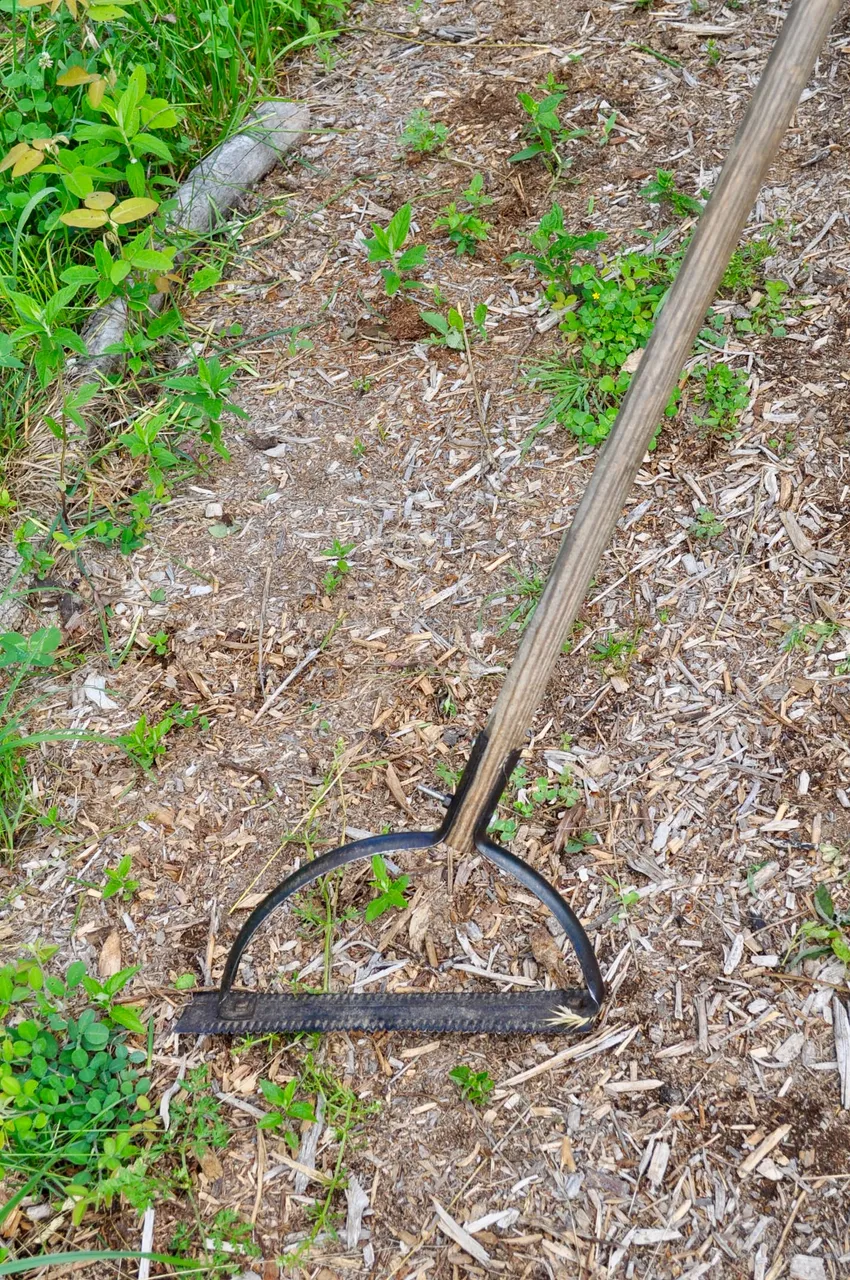
Brush Scythe
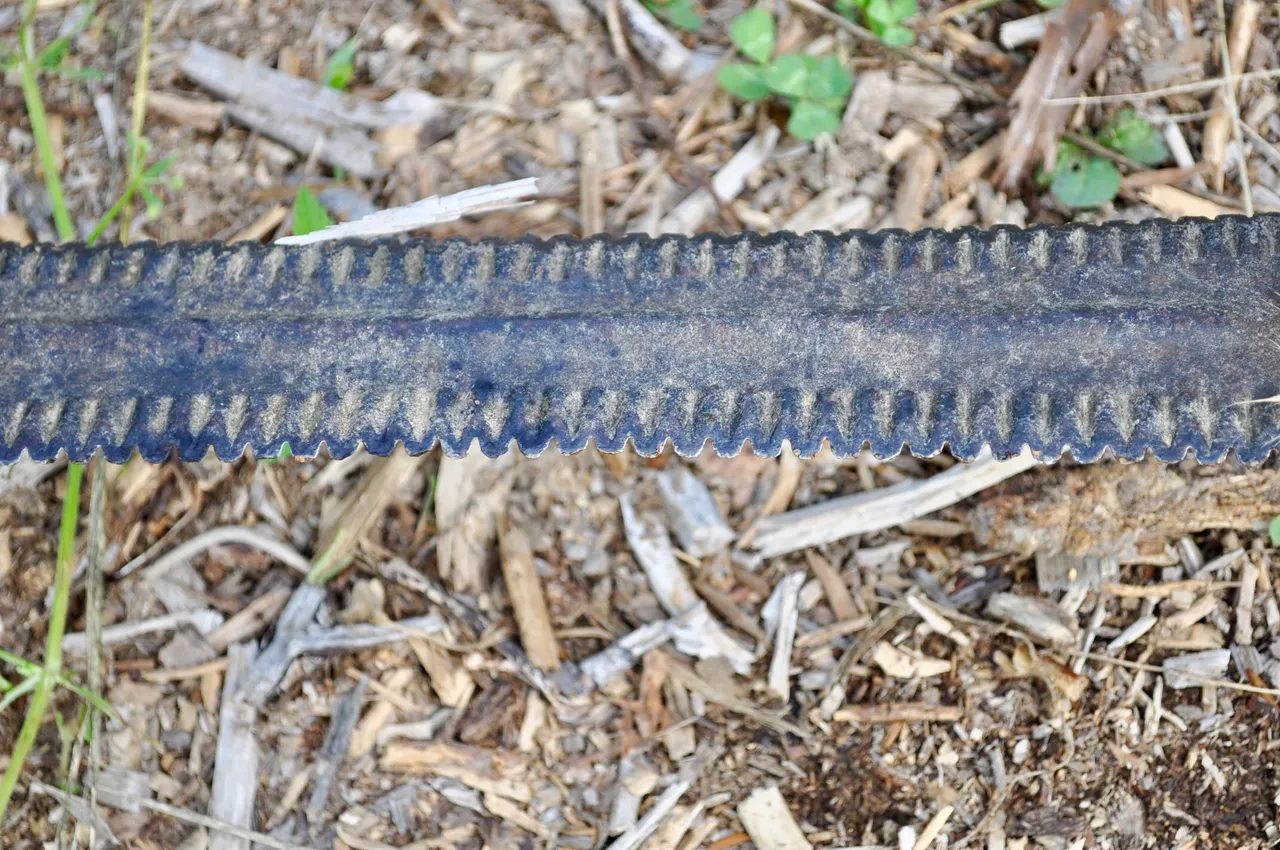
Brush Scythe detail.
As usual, these permaculture solutions are small/human scale, simple and effective, but they take time. Sometimes we let the weeds go too far and the grass reseeds itself. Sometimes we dream of more wood chip mulch (but have yet to find a great source). All in all, we love this method and it's so satisfying to see soil building up slowly over time like it does in nature. A well mulched plant is a thing of beauty.
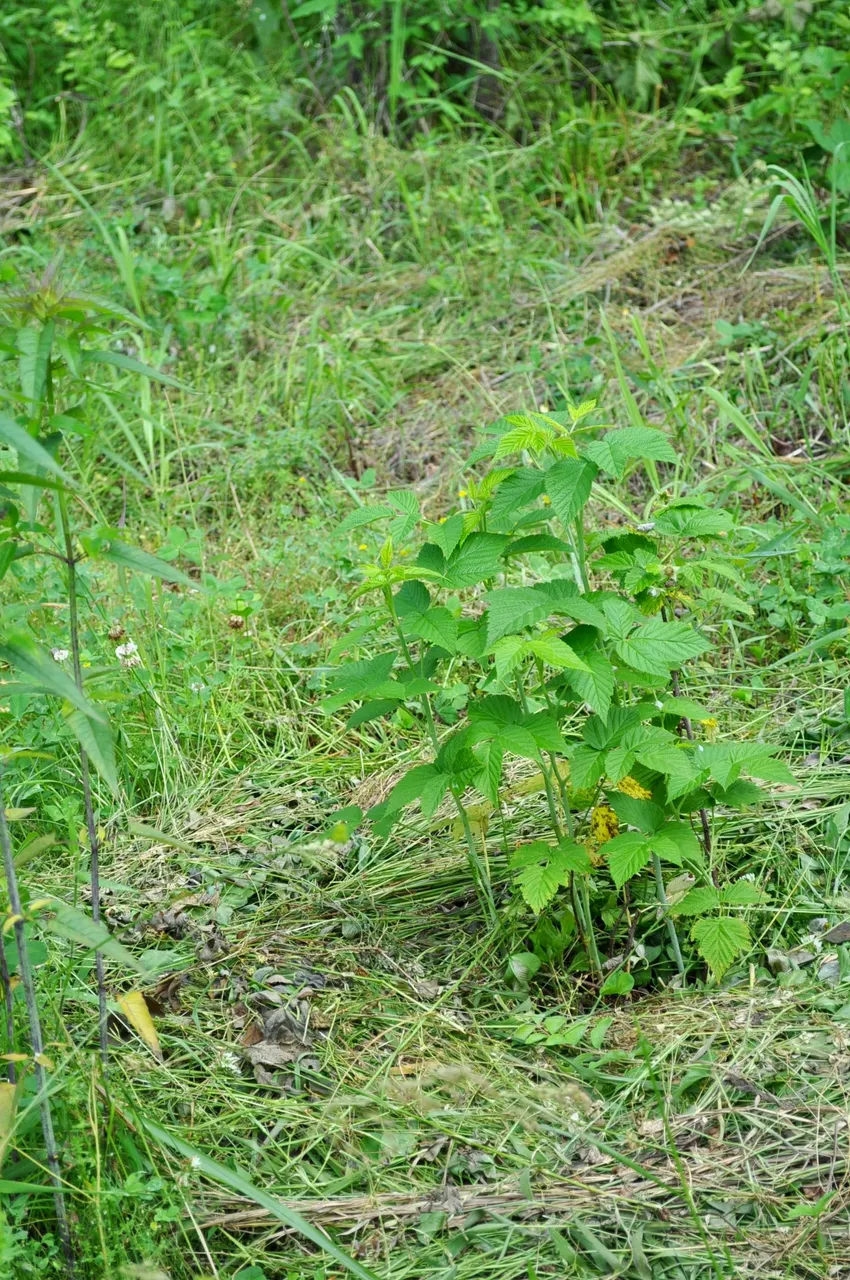
Happily mulched Raspberry & Native Monarda
Long Live Chop & Drop! Get MULCHING!
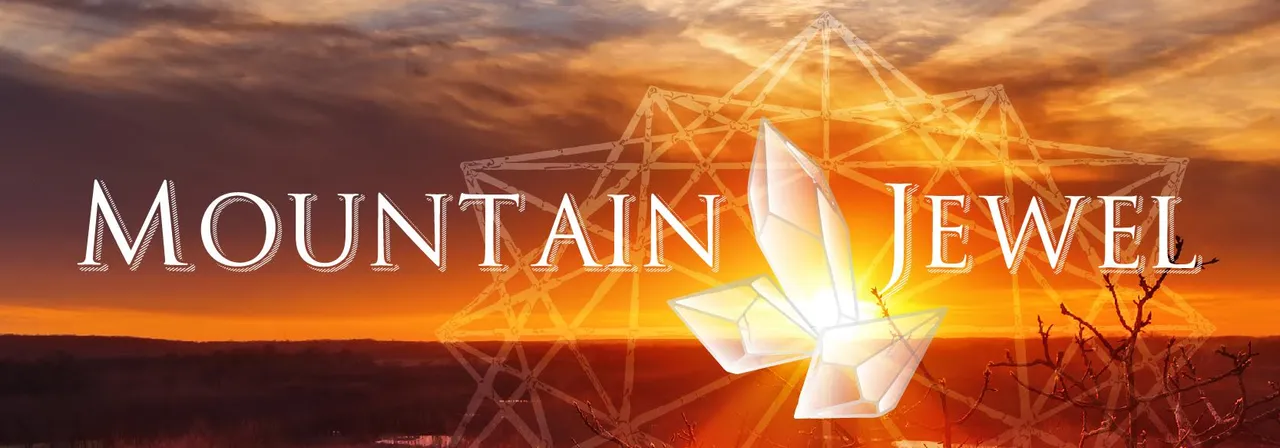
banner by @radicalunicorn
▶️ DTube
▶️ IPFS